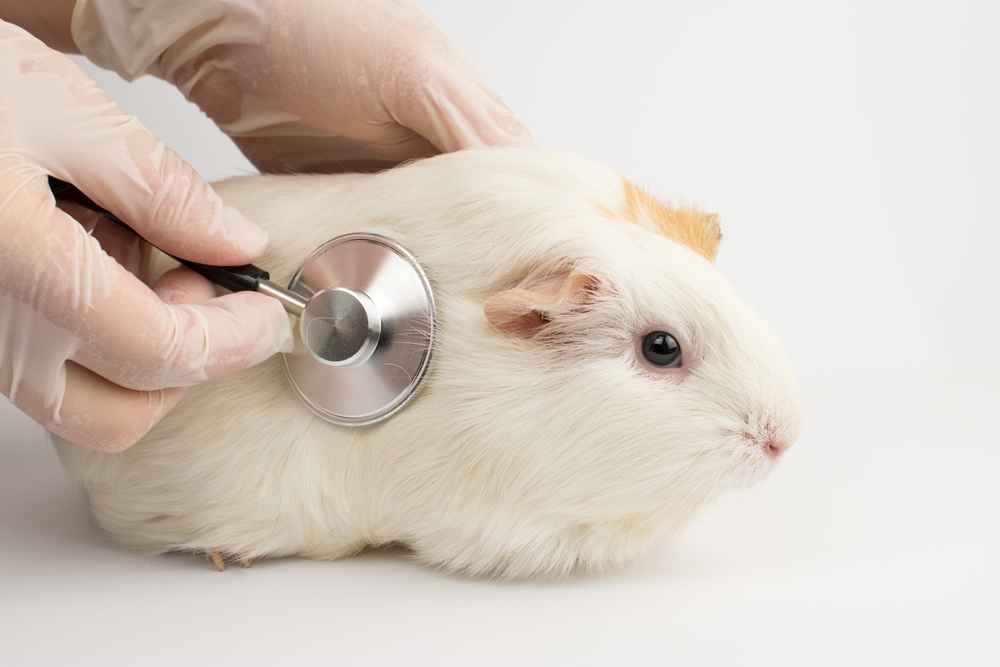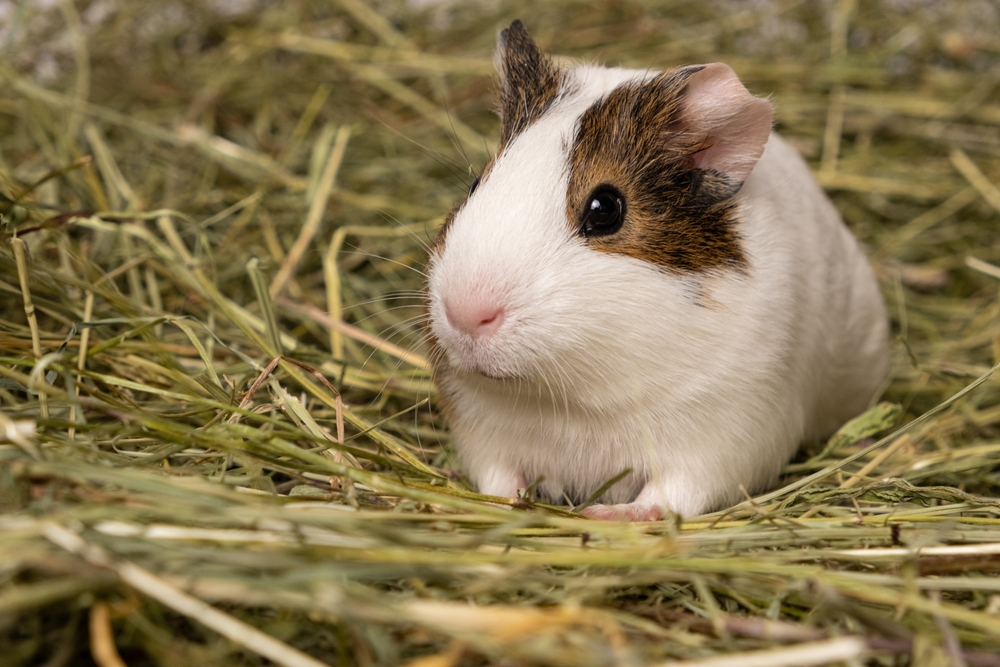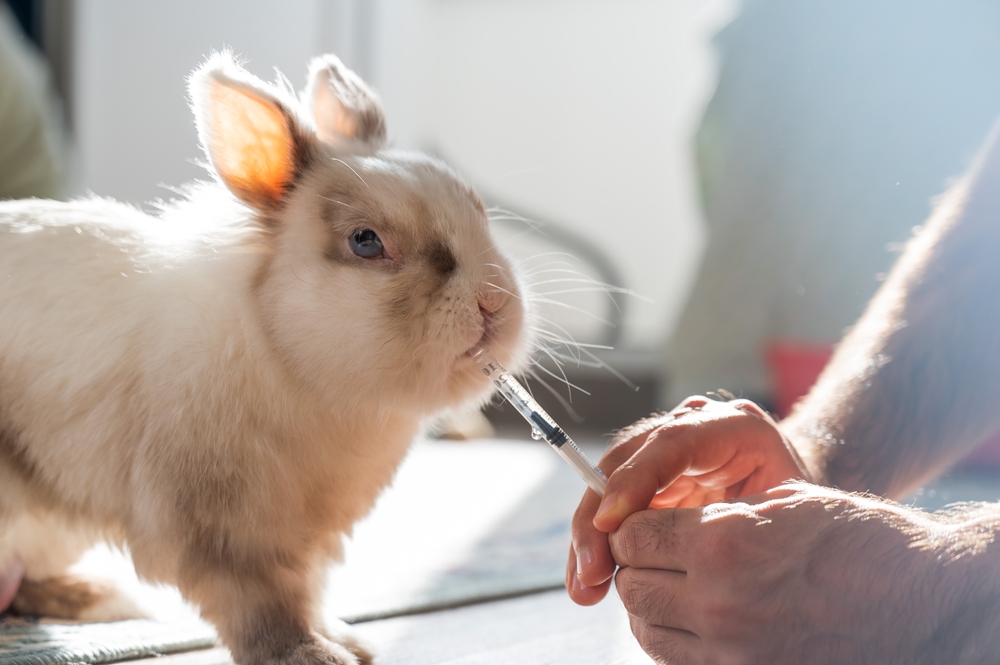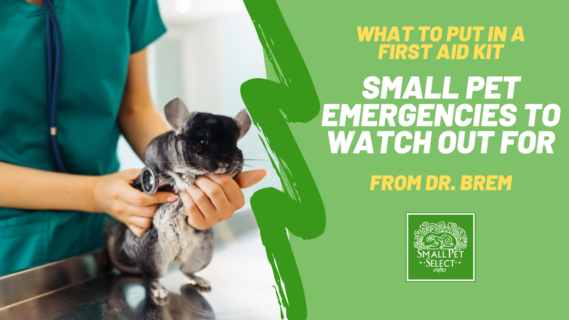Exotic animals, including “critters” such as rabbits, guinea pigs, rats, hamsters, and chinchillas, are good at hiding illnesses. Because of this, critter owners have to be even more in tune with how their pets act than dog or cat owners do.
Oftentimes by the time an owner notices their critter is acting oddly, it is already a small pet emergency.
Below is a list of situations that are small pet emergencies. If you notice your pet exhibiting any of these signs, you should get it to your veterinarian as soon as possible.
Also below is a list of some things to have in a critter first-aid kit. A first-aid kit does not take the place of a vet visit, but items in it can help you while you’re waiting to be seen.
Difficulty Breathing
Difficulty breathing includes gasping, open-mouth breathing, choking, gagging, or the abdomen moving significantly while breathing. If you see any of these signs, it could mean that something is stuck in your pet’s windpipe, that it has an advanced respiratory infection, or that it has heart disease, among other possibilities.

Bleeding
If you are unable to stop bleeding from a wound, if there is a significant amount of blood, or if the blood is coming from the genital area, bleeding should be considered an emergency.
Problems With Urination
If your critter has bloody urine, if it is straining to urinate, if it has not urinated in a while (the amount of time depends on the type of pet), or if it is making noise while urinating, this could be a sign of a urinary stone or infection.
A stone that is stuck is an emergency. Note that if you see red urine in a rabbit, it is not necessarily blood; this can be a normal color for rabbits. Check the urine for “pieces” of blood.
Not Eating Is A Small Pet Emergency
Small pets should eat at least every 12 hours. If your pet has not, see if it will take veggies or treats from you. If not, call your vet.
He or she may want you to come in right away or advise you on what to do. In the meantime, if you already know how to syringe feed your pet, attempt feeding it some of that formula.

Diarrhea or Constipation
Because critters eat all the time, they should also poop all the time. Not producing feces could be a sign of a blockage or a sign that your pet isn’t eating. Diarrhea can also be a sign of a blockage or a sign of infection.
Trauma
If your critter has fallen or been dropped, it could have a broken bone, even if you can’t see it. This is an emergency. Other types of trauma, such as burns, an injury to an eye, a bite from an attack, or an insect in the skin are all small pet emergencies. Call your vet.
Lethargy
Lethargy is a lack of energy, not wanting to move, or not acting normally. There are lots of reasons a pet could be lethargic, so a vet needs to check your critter out as soon as possible. If your pet is very lethargic or not responsive to stimulation, this is included in small pet emergencies.
Pain
If you notice your critter’s body is tense or if it has a tense abdomen, if it is grinding its teeth loudly, if it seems to be hunched up, or if it continues to want to face a wall, it’s probably in pain. As with lethargy, there are many causes of pain, and your vet should examine your pet as soon as possible.

Neurological Issues
Head tilt, rolling, circling, eyes moving back and forth or up and down, and walking oddly are all neurological signs. These usually indicate some sort of infection but can also be signs of a tumor or an injury.
Other Small Pet Emergencies
If you think that your pet ate something poisonous or was exposed to something toxic, if your pet’s gums are white or yellow, or if your pet has a temperature that is beyond the normal range, these are also reasons to go to a vet as soon as possible.
First-Aid Kit
Again, a first-aid kit is not a substitute for taking your pet to a veterinarian during small pet emergencies!
Here are valuable items to include in your kit:
- your veterinarian contact information, the contact info for the nearest clinic that handles small pet emergencies and sees your type of pet, and the pet poison helpline phone number (855-764-7661, but note that a fee will be charged)
- latex or non-latex gloves
- gauze and/or cotton balls for cleaning scrapes and cuts
- pet-safe antimicrobial solution for cleaning wounds
- triple-antibiotic ointment (without a numbing agent) for applying to wounds
- non-adherent gauze pads
- self-adhesive bandaging, also called vet wrap, to keep non-adherent gauze placed on a small wound (Just make sure you don’t wrap too tightly.)
- styptic powder, which can be applied to a broken or cut toenail to stop bleeding (Notes: You will also need to apply pressure to stop bleeding, and don’t let your pet lick this.)
- Critical Care or other syringe-feeding formula for your type of pet, which can be used if your pet has not eaten in 12 or more hours (Be sure to ask your veterinarian how to feed this or at minimum watch a couple of videos by professionals so that you don’t accidentally choke your pet.)
- oral syringes in sizes ranging from 1 cc to 20 cc, depending on the size of your pet
- For rabbits, infant gas drops (simethicone) can be given if your rabbit seems to be sitting uncomfortably and not wanting to eat (Important: Get the dose from your vet ahead of time, write it down, and keep it in your first-aid kit. Also important: If after giving several doses your rabbit is still not eating or pooping, consider this an emergency).
- thermometer and petroleum jelly or lubricant to place on the thermometer tip (Learn how to take your pet’s temperature and the normal range for your type of pet ahead of time.)
- heating pad, which can be placed under a towel on low under your pet in case your pet’s temperature is low (Make sure to give your pet room to move off of the pad if it gets too warm.)
- ice pad or frozen water bottle, which can be placed in a towel near your pet in case your pet’s temperature is high (Note: Take your pet to a vet as soon as possible if its temperature is high!)
- tweezers
- saline solution to wash out eyes and cotton swabs to help wipe out debris
- any medications your pet is currently taking
- rubbing alcohol to clean thermometers, tweezers, etc. (Don’t use alcohol on your pet.)
- optional items handy to keep in the kit: nail clippers, child scissors, towel, brush
Copyright 2024 Amy “Brem” Bremers, DVM





